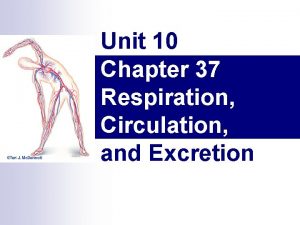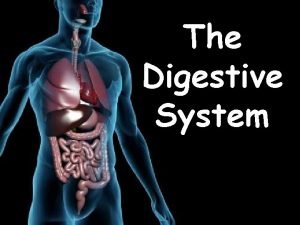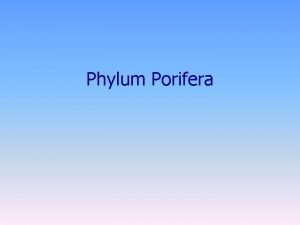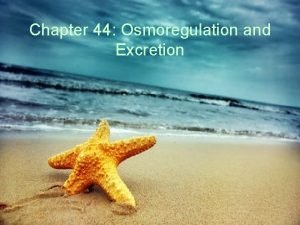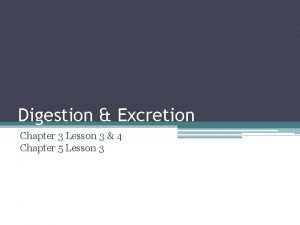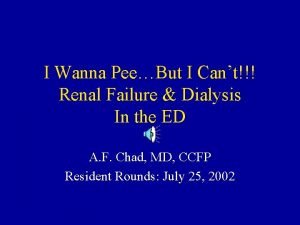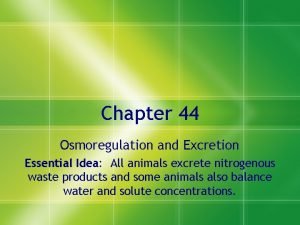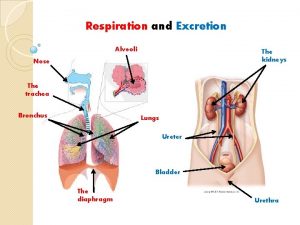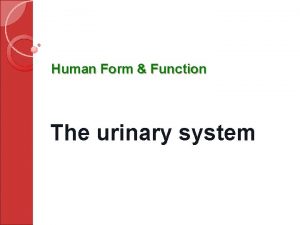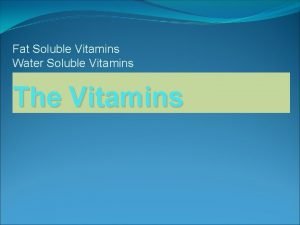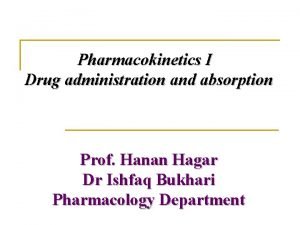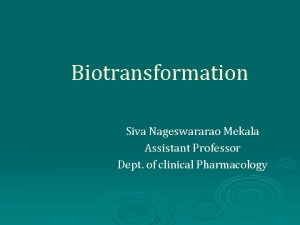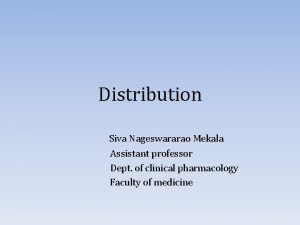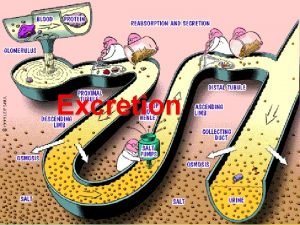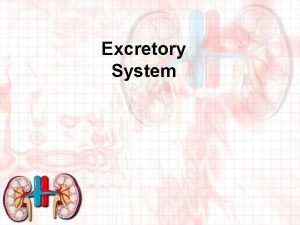EXCRETION OF DRUGS SIVANAGESWARARAO MEKALA ASSISTANT PROFESSOR DEPT














- Slides: 14

EXCRETION OF DRUGS SIVANAGESWARARAO MEKALA ASSISTANT PROFESSOR DEPT OF CLINICAL PHARMACOLOGY

Ø Drugs are eliminated from the body either unchanged by the process of excretion or converted to metabolites Drugs are excreted in v v v Urine Feces and bile Lungs Breast milk Sweat , saliva and tears. 9/25/2020

Renal excretion Ø Excretion of drugs and metabolites in the urine involves : glomerular filtration ü active tubular secretion ü passive tubular reabsorption ü Ø glomerular filtration and active tubular secretion facilitates drug excretion Ø Where as tubular reabsorption decreases drug excretion

Ø GLOMERULAR FILTRATION: ü Glomerular capillaries allow drug molecules of molecular weight below 20 000 to diffuse into the glomerular filtrate. ü Unbound fraction is filtered at glomerulus but they are reabsorbed back in the tubular lumen The extent of filtration is directly proportional to the glomerular filtration rate and to the fraction of the unbound drug in plasma.

Ø TUBULAR SECRETION: Drug molecules are transferred to the tubular lumen by two independent and relatively non-selective carrier systems. Unlike glomerular filtration, carrier-mediated transport can achieve maximal drug clearance even when most of the drug is bound to plasma protein.

Ø Active tubular secretion: proximal tubules Efflux - transporters P-glycoprotein MRP 2 ( multidrug-resistance-associated protein) Ø located in luminal membrane of PT cells. Active transport - free drug in tubular vessels - dissociation of Protein bound drugs Organic base Transporter Organic acid

Ø Organic acid transport : - Penicillin, Salicylates, Probenecid Ø Organic base transport-: Thiazides, quinine, amiloride Both transport processes are bidirectional Drugs & metabolites – secretion into lumen Endogenous substrates- e. g. - uric acid reabsorbed into plasma

The carrier system is relatively non-selective and therefore drugs having similar physicochemical properties compete for the same carrier system Ø Eg: Probenecid & Penicillin excretion- useful in gonococal infection Probenecid & Uric acid excretion. Tubular transport mechanisms not well developed at birth duration of action of many drugs in neonates e. g. penicillin, aspirin Ø

Ø PASSIVE TUBULAR REABSORPTION : Passive diffusion is bidirectional process Drugs diffuse across tubules depending on: Drug concentration Lipid solubility p. H – alkalanization of urine in barbiturate poisoning.

Ø urinary p. H affects tubular reabsorption Ø Weakly Basic drugs better excreted in acidic urine- e. g. morphine, amphetamine (PH of the urine is made acidic by ascorbic acid ) Ø Acidic drugs better excreted in alkaline urine- e. g. barbiturates, salicylates (PH of the urine is made alkaline by sodium bicarbonate) This principle is utilized for facilitating elimination of drugs in poisoning Ø The effect of changes in urinary p. H is greatest for those drugs having p. Ka values between 5 -8. Ø

Biliary and faecal excretion Faeces contain unabsorbed fraction and the drug in bile Drugs attaining high concentration in bile doxycycline cefoperazone

Enterohepatic circulation Ø Most drugs secreted from liver into bile and then into small intestines are passively reabsorbed so that the compound reenters the blood that perfuses intestines and again be carried to liver Ø Such recycling continues and is known as enterohepatic cycle or circulation Ø Examples: Morphine, Metronidazole, Estradiol

Excretion by other routes Ø Saliva: Lithium, metronidazole, phenytoin Ø Gases and volatile liquids (general anaesthetics) are excreted by lungs Ø Excretion in hair and skin is of forensic importance As, Hg

Milk has an acidic p. H. Basic drugs like chloramphenicol, morphine, phenytoin are secreted through milk and may affect the suckling infant
 First order kinetics
First order kinetics Promotion from associate professor to professor
Promotion from associate professor to professor Cuhk assistant professor salary
Cuhk assistant professor salary Chapter 37 respiration circulation and excretion
Chapter 37 respiration circulation and excretion 5 steps of digestion
5 steps of digestion General characters of porifera
General characters of porifera Osmoregulation
Osmoregulation Digestion and excretion lesson 3
Digestion and excretion lesson 3 Diasylate
Diasylate Excretion
Excretion Respiration and excretion
Respiration and excretion What is the function of glomerulus class 10
What is the function of glomerulus class 10 Water soluble vitamins characteristics
Water soluble vitamins characteristics Drug excretion
Drug excretion Malpighian tubules
Malpighian tubules



